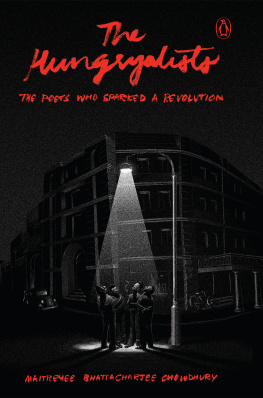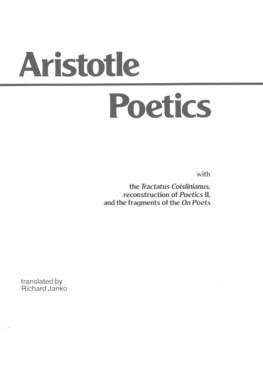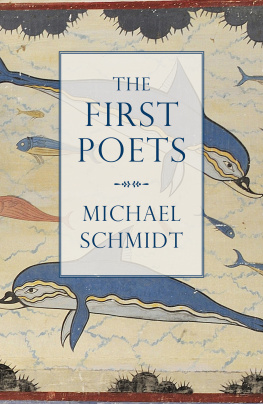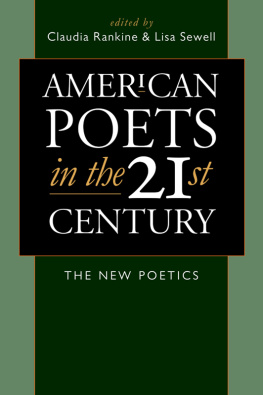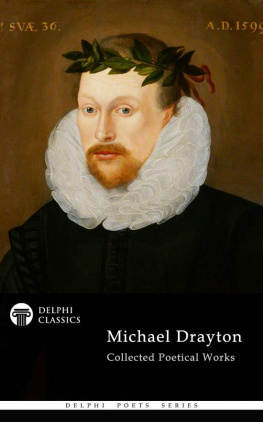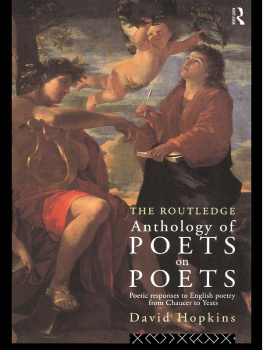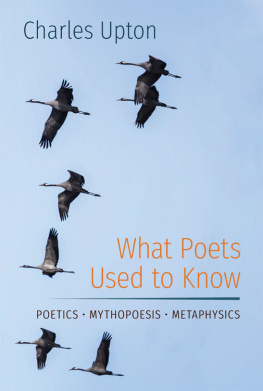Poetical Dust
Poetical Dust

Poets Corner and the Making of Britain
Thomas A. Prendergast

A volume in the Haney Foundation Series, established in 1961
with the generous support of Dr. John Louis Haney.
Copyright 2015 University of Pennsylvania Press
All rights reserved. Except for brief quotations used for
purposes of review or scholarly citation, none of this book
may be reproduced in any form by any means without
written permission from the publisher.
Published by
University of Pennsylvania Press
Philadelphia, Pennsylvania 19104-4112
www.upenn.edu/pennpress
Printed in the United States of America on acid-free paper
1 3 5 7 9 10 8 6 4 2
Library of Congress Cataloging-in-Publication Data
Prendergast, Thomas A., author.
Poetical dust : Poets Corner and the making of Britain /
Thomas A. Prendergast.
pages cm. (Haney Foundation series)
Includes bibliographical references and index.
ISBN 978-0-8122-4750-3 (alk. paper)
1. Poets Corner (Westminster Abbey)History.
2. Literary landmarksEnglandLondonHistory.
3. Literature and societyGreat BritainHistory.
4. Authors and readersGreat BritainHistory. 5. Poets,
EnglishTombs. 6. Authors, EnglishTombs. I. Title.
II. Series: Haney Foundation series.
PR110.L6P74 2015
820.9'9421dc23
2015016154
For Terry and Charles
I passed some time in Poets Corner [sic], which occupies an end of one of the transepts or cross aisles of the abbey. The monuments are generally simple, for the lives of literary men afford no striking themes for the sculptor. Shakespeare and Addison have statues erected to their memories, but the greater part have busts, medallions, and sometimes mere inscriptions. Notwithstanding the simplicity of these memorials, I have always observed that the visitors to the abbey remained longest about them. A kinder and fonder feeling takes the place of that cold curiosity or vague admiration with which they gaze on the splendid monuments of the great and the heroic. They linger about these as about the tombs of friends and companions, for indeed there is something of companionship between the author and the reader.
Washington Irving, The Sketchbook of Geoffrey Crayon
CONTENTS


Sometime in the 1850s Nathaniel Hawthorne visited Poets Corner in Westminster Abbey for the first time and remarked on the impression that he had been there before. Yet, far from feeling that weird sense of dread that usually accompanies the Unheimliche, or uncanny, he remarks on the hominess of the space.
It seemed to me that I had always been familiar with the spot. Enjoying a humble intimacyand how much of my life had else been a dreary solitude!with many of its inhabitants, I could not feel myself a stranger there. It was delightful to be among them. There was a genial awe, mingled with a sense of kind and friendly presences about me; and I was glad, moreover, at finding so many of them there together, in fit companionship, mutually recognized and duly honored, all reconciled now, whatever distant generations, whatever personal hostility or other miserable impediment, had divided them far asunder while they lived. I have never felt a similar interest in any other tombstones, nor have I ever been deeply moved by the imaginary presence of other famous dead people. A poets ghost is the only one that survives for his fellow mortals, after his bones are in the dust,and he not ghostly, but cherishing many hearts with his own warmth in the chillest atmosphere of life. What other fame is worth aspiring for?
Of course, Hawthorne, as a writer, has a special kinship with those ghosts who inhabit Poets Corner, but, like his countryman Washington Irving (who provides the epigraph for this book), he extends this feeling to the larger publiccreating what might be called spiritual communion with those writers who have gone before. In so doing, Hawthorne and Irving oppose the cold marmoreal presence of dead heroes and kings with the warmth, one might say vitality, of dead writers. Indeed, invoking a tradition that goes back to the Roman author Horace, Hawthorne will go on to claim that it is, in fact, poets who are responsible for the continuing fame of statesmen and heroes. Immortality is thus produced by poets, and this immortality, in turn, seems to warm and enliven the space in the Abbey that is inhabited by so many poetical corpsesto make it a home for all.
I begin this book about a profoundly English space with two American writers because I want to convey the temporal and geographical reach of Poets Corner. Though both writers visit Poets Corner as members of an English-speaking fraternity, their sense of kinship is born not out of a desire to be immortalized within the walls of Westminster Abbey but out of a recognition that the space elicits a certain kind of feeling from them. We might expect these writers to feel a companionship with their fellow writers, which they do, but both also move from their personal experience to a larger public feeling about the particular aspects of the writer in his or her afterlife. The writer is, as Hawthorne notes, a ghostbut not ghostlybecause of the warmth he possesses and engenders in the visitor. Both Irving and Hawthorne, in other words, use their visits to Poets Corner to enlarge on the relationship between the author and the reader and both contrast the experience in the Corner with the experience one has when one encounters other monuments or gravestones. Poets Corner becomes a place that reminds them of the bond between reader and writer that remains long after the writer has died.
In this way, Poets Corner might be seen as a classic lieu de mmoirea place that, as Pierre Nora puts it, embodies a memorial consciousness that has barely survived in a historical age. Poets Corner functions as a kind of memory activator. Like the tombs of kings and heroes, the monuments of Poets Corner stand as palpable reminders of the memory that we are about to lose.
But as long as we focus solely on the monuments commemorative functions, we remain locked into a reading of the space as exclusively melancholican attempt to maintain a connection with what we have lost. Given that so much poetry seems obsessed with loss, it is not surprising that Poets Corner seems to invite reactions that emphasize loss and memorial recuperation. As At best, the monuments in Poets Corner would seem extraneousan impermanent duplication of the literary works that already guarantee the immortality of the poet.
So what is it that Poets Corner does? What does it try to immortalize? I would argue that we need to ask not only what this site of culture did for the visitor, but what Poets Corner did to the visitor. The reminding that Poets Corner seems to engage in is not merely the spurring of abstract recollections of great literary men and women that would render cold curiosity or vague admiration, but an uncovering of affect in the visitor. What does it mean to employ a metaphor of excavation in relation to affect? It suggests that if visitors to Poets Corner come in order to exhume (both figuratively and literally) the bodies of the poets, Poets Corner requires that the visitor unearth his or her emotions vis--vis these writers. Insofar as it calls forth or even demands something from the visitor, Poets Corner has agency. This is not so strange a statement as it may appear. The Corner is very old and is the product of a series of discrete actions over five hundred years. The Corner contains all of these actions, yet all of these actions do not encompass the Corner. This is not to say that those who erected statues, lobbied for burial, or wrote about the Corner did not wish to use the Corner to accomplish various political, ethical, or poetical goals. Poets, politicians, and even merchants all understood the significance of the Corner and attempted to use it to their own purposes. But the larger sensibility created by all of these acts often led the Corner to affect its visitors in very different ways.
Next page

